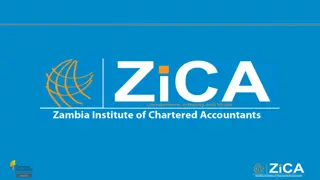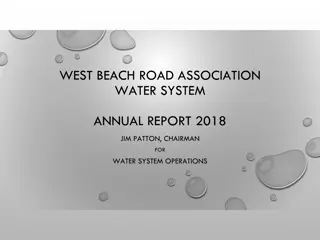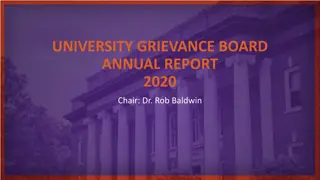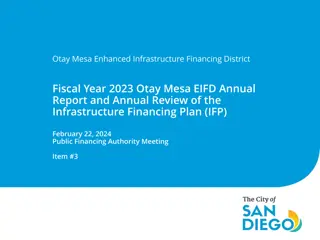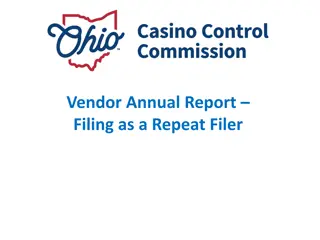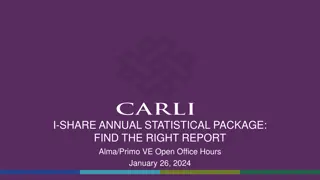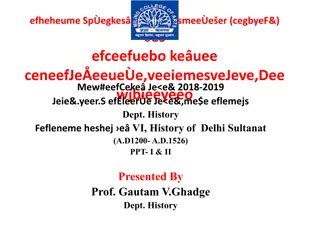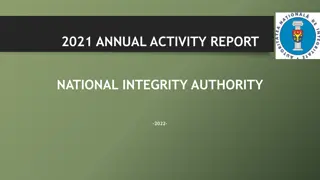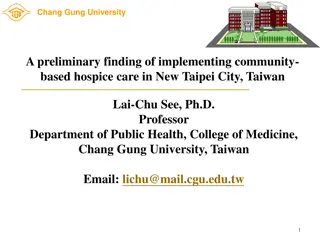
Understanding Precipitation Extremes in a Warming Globe
Delve into the impact of global warming on precipitation intensity and the limited effect of aerosols on precipitation, shedding light on the changing patterns of rainfall extremes.
Download Presentation

Please find below an Image/Link to download the presentation.
The content on the website is provided AS IS for your information and personal use only. It may not be sold, licensed, or shared on other websites without obtaining consent from the author. If you encounter any issues during the download, it is possible that the publisher has removed the file from their server.
You are allowed to download the files provided on this website for personal or commercial use, subject to the condition that they are used lawfully. All files are the property of their respective owners.
The content on the website is provided AS IS for your information and personal use only. It may not be sold, licensed, or shared on other websites without obtaining consent from the author.
E N D
Presentation Transcript
International Center of Excellence (ICoE) Annual Report Shaw Chen Liu, Director Research Center for Environmental Changes Academia Sinica, Taipei China Chengdu, China Nov. 6, 2012
Goals of ICoE Promote and coordinate interdisciplinary research on disaster risks in Taiwan Serve as an international platform for conducting integrated research on disaster risk (including natural and social sciences)
ICoE (Also for Center for Sustainability Science, see below) Organization Director: Dr. Chao Han Liu (Academician and VP) Executive Secretary: Dr. Yih-Hsiung Yeh Deputy Executive Secretary: Dr. Louise L. Y. Wei Visiting Senior Research Fellow: Dr. Tony C. Liu Program Managers: Si-Yu Yu and Wan-Chun Wu
ICoE International Program Organized Second International Conference on Cities At Risk: Climate Change Risks at Asian Coastal Cities (CARII), April 11- 13, 2011 in Academia Sinica. Hosted two Advanced Institutes (ICoE/START): FORIN, March 12-18, 2012 Data For Coastal Cities at Risk , Oct 22-27, 2012 Co-sponsor the 23rd International CODATA Conference on Open Data and Information for a Changing Planet , Oct 28-31, 2012 IRDR Data for Disaster Loss Workshop, Oct 31 Nov 2, 2012 Visitor Program Dr. Hua-Lu Pan, Physical Parametrization Specialist, NCEP, January to March, 2012 ICoE Domestic Program Incorporated into the Center for Sustainability Science at Academia Sinica
Center for Sustainability Science Established on September 1, 2012 at Academia Sinica (Budgeted at US$ 7 millions annually) Goal Conducts sustainability science-related research at Academia Sinica to study the impacts of globe climate change on society and to develop adaptation practices Promotes and coordinates interdisciplinary research on sustainability science at Academia Sinica Serves as an international platform for conducting disaster risk reduction research Actively participates in major national and international sustainability science related activities Services as a think tank for sustainability science at Academia Sinica
How do precipitation extremes change in a warming globe? I ve been working on this problem for about15 years, first on the aerosols effect on the precipitation. It turns out that aerosols have little effect on the precipitation, while global warming has a sever detrimental impact on the precipitation intensity (but not much on the total precipitation). Increases in very heavy precipitation, and sometimes with decreases in light precipitation have been reported in recent years over most land areas (e.g. Karl & Knight, 1998; Liu et al., 2005; Goswami et al., 2006) as well as the tropical oceans (Lau and Wu, 2007).
Increases in heavy precipitation can lead to more and worse floods and mudslides. Light and moderate precipitation is a critical source of soil moisture and ground water, its reduction increases the risk of droughts.
1955 1960 1965 1970 1975 1980 1985 1990 1995 2000 2005 2010 1000 A. (2315) Changes of precipitation in Taiwan (1960-2005) 800 Precipitation (mm) 600 400 200 0 Updated from Liu et al. (2002) -200 -400 -600 -800 300 B. (981) 200 Hsu & Chen (2002) also noticed the loss of light rain. Rainhour (hour) 100 0 -100 -200 -300 -400 1.2 C. (2.9) 1.0 Intensity (mm/hour) 0.8 0.6 0.4 0.2 0.0 -0.2 -0.4 -0.6 1955 1960 1965 1970 1975 1980 1985 1990 1995 2000 2005 2010
Extreme Precipitation A significant part of the following results is based on: Liu, S.C., Congbin Fu, Chein-Jung Shiu, Jen-Ping Chen, and Futing Wu, GRL, 2009. Shiu, C. J., S. C. Liu, C. Fu, A. Dai, and Y. Sun, GRL, 2012.
How should precipitation intensity change in a warming globe? Trenberth et al. (2003) hypothesized that the precipitation intensity should increase at about the same rate as atmospheric moisture, i.e. about 7%/K according to the Clausius-Clapeyron equation, because precipitation rates from storms were determined by low-level moisture convergence. Furthermore, they argued that the increase of heavy rainfalls could even exceed the moisture increase because additional latent heat released from the increased water vapor could feed back and invigorate the storms.
GPCP data, latitudinal variation (Liu et al., 2009) 150 60S~60N 30S~30N (60S~30S,30N~60N) Normalized delta P / delta T (%/K) 100 50 0 -50 1 2 3 4 5 6 7 8 9 10 Intensity categories
300 TC non-TC 250 200 P/ T (%/K) 150 100 50 0 -50 -100 1 2 3 4 5 6 7 8 9 10 11 12 Intensity categories
Changes of precipitation intensity in Taiwan as a function of global temperature 200 150 100 P/ T (%/K) 50 0 -50 -100 -150 1 2 3 4 5 6 7 8 9 10 Intensity categories
For 10 bins in HuaNan 156 daily data (79-05) 100 Southern China 80 60 40 p/ T(%/ ) 20 0 1 2 3 4 5 6 7 8 9 10 -20 -40 -60 rain rate(bin)
Adaptation is imperative! Global warming is already here. Reducing greenhouse gas emissions will need a long time to take effect (~50 years). Therefore, It is imperative to start adaptation processes, particularly in flood control, drought prevention and water resource management.
THANK YOU IRDR ICoE http://irdr-icoe.sinica.edu.tw/
ICoE Future Plan Host two Advanced Institutes in 2013 (RIA and one TBD) Conduct visiting scientists and research fellows program Continue to cooperate with international and domestic organizations to organize symposia, training workshops and other scientific activities Continue to build a partnership network of disaster reduction research in Taiwan and the international scientific community. Participate actively in the research activities at the Center for Sustainable Science at AS
From Liu et al. (GRL, 2009) 100 10 GPCP data (observation) Sun et al. (2007) (model) 80 8 Normalized P / T (%/K) Normalized P/ T (%/K) 60 6 40 4 20 2 0 0 -20 -2 -40 -4 1 2 3 4 5 6 7 8 9 10 Intensity categories




